Substrate may refer to:
Substrate may refer to:

Sedimentary rocks are types of rock that are formed by the accumulation or deposition of mineral or organic particles at Earth's surface, followed by cementation. Sedimentation is the collective name for processes that cause these particles to settle in place. The particles that form a sedimentary rock are called sediment, and may be composed of geological detritus (minerals) or biological detritus. The geological detritus originated from weathering and erosion of existing rocks, or from the solidification of molten lava blobs erupted by volcanoes. The geological detritus is transported to the place of deposition by water, wind, ice or mass movement, which are called agents of denudation. Biological detritus was formed by bodies and parts of dead aquatic organisms, as well as their fecal mass, suspended in water and slowly piling up on the floor of water bodies. Sedimentation may also occur as dissolved minerals precipitate from water solution.

A printed circuit board (PCB), also called printed wiring board (PWB), is a medium used to connect or "wire" components to one another in a circuit. It takes the form of a laminated sandwich structure of conductive and insulating layers: each of the conductive layers is designed with a pattern of traces, planes and other features etched from one or more sheet layers of copper laminated onto and/or between sheet layers of a non-conductive substrate. Electrical components may be fixed to conductive pads on the outer layers in the shape designed to accept the component's terminals, generally by means of soldering, to both electrically connect and mechanically fasten them to it. Another manufacturing process adds vias, plated-through holes that allow interconnections between layers.

A reef is a ridge or shoal of rock, coral, or similar relatively stable material lying beneath the surface of a natural body of water. Many reefs result from natural, abiotic (non-living) processes such as deposition of sand or wave erosion planing down rock outcrops. However, reefs such as the coral reefs of tropical waters are formed by biotic (living) processes, dominated by corals and coralline algae. Artificial reefs, such as shipwrecks and other man-made underwater structures, may occur intentionally or as the result of an accident. These are sometimes designed to increase the physical complexity of featureless sand bottoms to attract a more diverse range of organisms. Reefs are often quite near to the surface, but not all definitions require this.
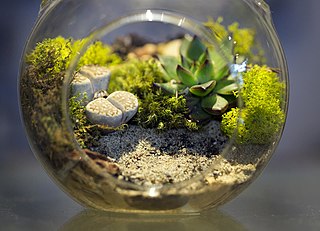
A vivarium is an area, usually enclosed, for keeping and raising animals or plants for observation or research. Water-based vivaria may have open tops providing they are not connected to other water bodies. An animal enclosure is considered a vivarium only if it provides quality of life through naturalistic components such as ample living space and natural decor that allow and encourage natural behaviours. Often, a portion of the ecosystem for a particular species is simulated on a smaller scale, with controls for environmental conditions such as temperature, humidity and light.

The benthic zone is the ecological region at the lowest level of a body of water such as an ocean, lake, or stream, including the sediment surface and some sub-surface layers. The name comes from ancient Greek, βένθος (bénthos), meaning "the depths." Organisms living in this zone are called benthos and include microorganisms as well as larger invertebrates, such as crustaceans and polychaetes. Organisms here generally live in close relationship with the substrate and many are permanently attached to the bottom. The benthic boundary layer, which includes the bottom layer of water and the uppermost layer of sediment directly influenced by the overlying water, is an integral part of the benthic zone, as it greatly influences the biological activity that takes place there. Examples of contact soil layers include sand bottoms, rocky outcrops, coral, and bay mud.
Organic matter, organic material, or natural organic matter refers to the large source of carbon-based compounds found within natural and engineered, terrestrial, and aquatic environments. It is matter composed of organic compounds that have come from the feces and remains of organisms such as plants and animals. Organic molecules can also be made by chemical reactions that do not involve life. Basic structures are created from cellulose, tannin, cutin, and lignin, along with other various proteins, lipids, and carbohydrates. Organic matter is very important in the movement of nutrients in the environment and plays a role in water retention on the surface of the planet.
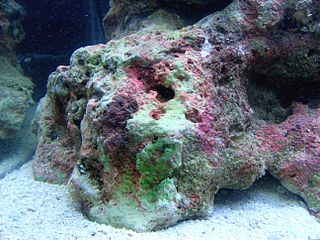
Live rock is rock from the ocean that has been introduced into a saltwater aquarium. Along with live sand, it confers to the closed marine system multiple benefits desired by the saltwater aquarium hobbyist. The name sometimes leads to misunderstandings, as the "live rock" itself is not actually alive, but rather is simply made from the aragonite skeletons of long dead corals, or other calcareous organisms, which in the ocean form the majority of coral reefs. When taken from the ocean it is usually encrusted with coralline algae and inhabited by a multitude of marine organisms. The many forms of micro and macroscopic marine life that live on and inside of the rock, which acts as an ideal habitat, give it the name "live rock".
A stratum in geology is a layer of sedimentary rock or sediment. In archaeology, it is a layer of man-produced sediment of a certain age.
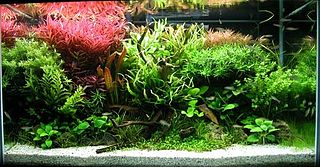
Aquascaping is the craft of arranging aquatic plants, as well as rocks, stones, cavework, or driftwood, in an aesthetically pleasing manner within an aquarium—in effect, gardening under water. Aquascape designs include a number of distinct styles, including the garden-like Dutch style and the Japanese-inspired nature style. Typically, an aquascape houses fish as well as plants, although it is possible to create an aquascape with plants only, or with rockwork or other hardscape and no plants.

Fishkeeping is a popular hobby, practiced by aquarists, concerned with keeping fish in a home aquarium or garden pond. There is also a piscicultural fishkeeping industry, serving as a branch of agriculture.

In biology, detritus or is dead particulate organic material, as distinguished from dissolved organic material. Detritus typically includes the bodies or fragments of bodies of dead organisms, and fecal material. Detritus typically hosts communities of microorganisms that colonize and decompose it. In terrestrial ecosystems it is present as leaf litter and other organic matter that is intermixed with soil, which is denominated "soil organic matter". The detritus of aquatic ecosystems is organic substances that is suspended in the water and accumulates in depositions on the floor of the body of water; when this floor is a seabed, such a deposition is denominated "marine snow".

River ecosystems are flowing waters that drain the landscape, and include the biotic (living) interactions amongst plants, animals and micro-organisms, as well as abiotic (nonliving) physical and chemical interactions of its many parts. River ecosystems are part of larger watershed networks or catchments, where smaller headwater streams drain into mid-size streams, which progressively drain into larger river networks. The major zones in river ecosystems are determined by the river bed's gradient or by the velocity of the current. Faster moving turbulent water typically contains greater concentrations of dissolved oxygen, which supports greater biodiversity than the slow-moving water of pools. These distinctions form the basis for the division of rivers into upland and lowland rivers.
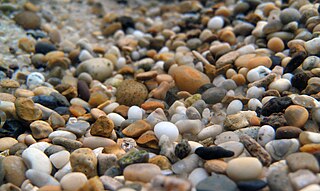
The substrate of an aquarium refers to the material used on the tank bottom. It can affect water chemistry, filtration, and the well-being of the aquarium's inhabitants, and is also an important part of the aquarium's aesthetic appeal. The appropriate substrate depends on the type of aquarium; the most important parameter is whether the aquarium contains fresh water or saltwater.
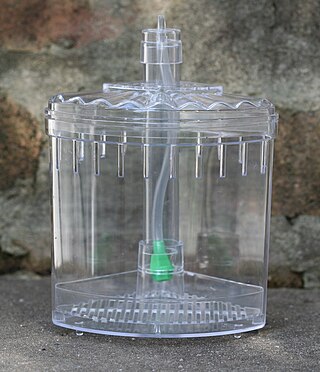
Aquarium filters are critical components of both freshwater and marine aquaria. Aquarium filters remove physical and soluble chemical waste products from aquaria, simplifying maintenance. Furthermore, aquarium filters are necessary to support life as aquaria are relatively small, closed volumes of water compared to the natural environment of most fish.

A freshwater aquarium is a receptacle that holds one or more freshwater aquatic organisms for decorative, pet-keeping, or research purposes. Modern aquariums are most often made from transparent glass or acrylic glass. Typical inhabitants include fish, plants, amphibians, and invertebrates, such as snails and crustaceans.

A bottom feeder is an aquatic animal that feeds on or near the bottom of a body of water. Biologists often use the terms benthos—particularly for invertebrates such as shellfish, crabs, crayfish, sea anemones, starfish, snails, bristleworms and sea cucumbers—and benthivore or benthivorous, for fish and invertebrates that feed on material from the bottom. However the term benthos includes all aquatic life that lives on or near the bottom, which means it also includes non-animals, such as plants and algae. Biologists also use specific terms that refer to bottom feeding fish, such as demersal fish, groundfish, benthic fish and benthopelagic fish. Examples of bottom feeding fish species groups are flatfish, eels, cod, haddock, bass, grouper, carp, bream (snapper) and some species of catfish, sharks.
Aquatic science is the study of the various bodies of water that make up our planet including oceanic and freshwater environments. Aquatic scientists study the movement of water, the chemistry of water, aquatic organisms, aquatic ecosystems, the movement of materials in and out of aquatic ecosystems, and the use of water by humans, among other things. Aquatic scientists examine current processes as well as historic processes, and the water bodies that they study can range from tiny areas measured in millimeters to full oceans. Moreover, aquatic scientists work in Interdisciplinary groups. For example, a physical oceanographer might work with a biological oceanographer to understand how physical processes, such as tropical cyclones or rip currents, affect organisms in the Atlantic Ocean. Chemists and biologists, on the other hand, might work together to see how the chemical makeup of a certain body of water affects the plants and animals that reside there. Aquatic scientists can work to tackle global problems such as global oceanic change and local problems, such as trying to understand why a drinking water supply in a certain area is polluted.

An aquarium is a vivarium of any size having at least one transparent side in which aquatic plants or animals are kept and displayed. Fishkeepers use aquaria to keep fish, invertebrates, amphibians, aquatic reptiles, such as turtles, and aquatic plants. The term aquarium, coined by English naturalist Philip Henry Gosse, combines the Latin root aqua, meaning 'water', with the suffix -arium, meaning 'a place for relating to'.
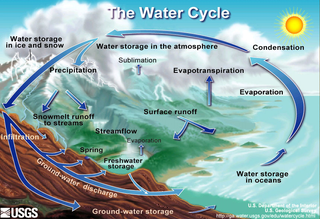
Freshwater environmental quality parameters are those chemical, physical or biological parameters that can be used to characterise a freshwater body. Because almost all water bodies are dynamic in their composition, the relevant quality parameters are typically expressed as a range of expected concentrations.
Tegnue are rock formations which have developed in the sea bottom of the Gulf of Venice, in the northern Adriatic Sea. They are bio-sediments which are very similar to coral reefs and for this reason they also are called Adriatic coral reefs. They are found especially off the coasts of Caorle, the Cavallino peninsula, the Lido di Venezia island and the Sottomarina peninsula at Chioggia. There are eight such formations. They are at a depth of -15/-40 m. The largest formation is off the coast of the Cavallino peninsula.